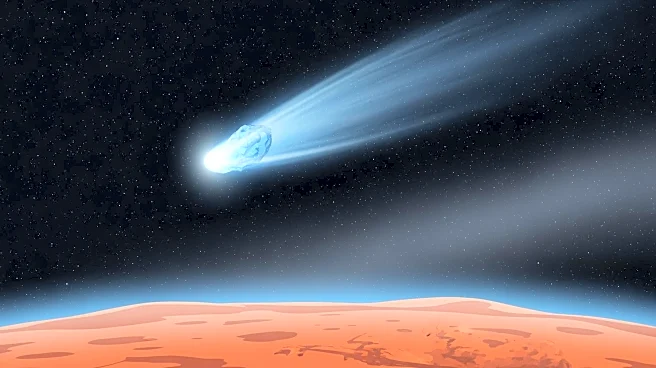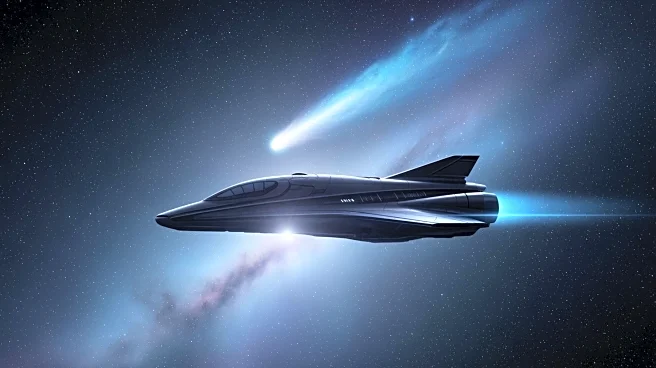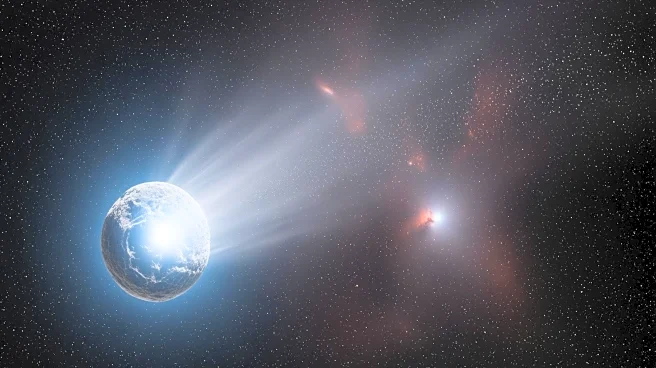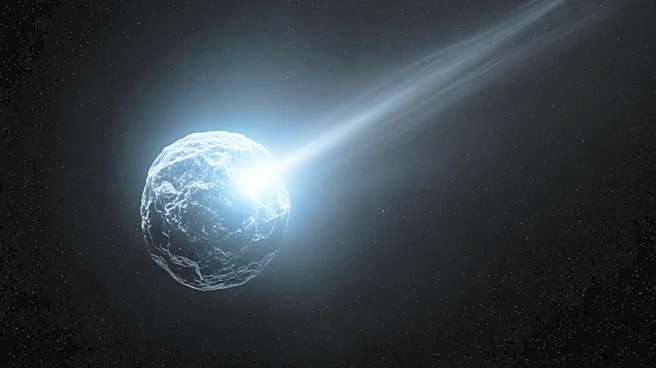What's Happening?
NASA has released images of the interstellar comet 3I/ATLAS, captured by its Mars missions, including the Mars Reconnaissance Orbiter (MRO), MAVEN orbiter, and Perseverance rover. The comet made its closest
flyby to Mars in early October, coming within 30 million km of the planet. The MRO captured visible light images using its HiRISE camera, while MAVEN used its Imaging Ultraviolet Spectrograph to capture ultraviolet images. These images provide detailed insights into the comet's chemical composition and size. The Perseverance rover also captured faint images of the comet from the surface of Mars. The comet is expected to make its closest approach to Earth on December 19, 2025, posing no threat as it will be almost twice the distance between the Earth and the Sun.
Why It's Important?
The release of these images is significant as it provides scientists with valuable data to study interstellar objects, which are rare occurrences. The detailed images and chemical analysis can help researchers understand the composition and origin of such comets, offering insights into the broader universe. This event also highlights the capabilities of NASA's Mars missions in capturing and analyzing celestial phenomena, contributing to the scientific community's understanding of space objects. The data gathered could potentially inform future missions and studies related to interstellar objects.
What's Next?
As 3I/ATLAS approaches Earth, scientists will continue to monitor its trajectory and behavior. The comet's closest approach to Earth on December 19, 2025, will provide further opportunities for observation and study. Researchers may use this event to refine their models of interstellar comet behavior and composition. Additionally, the data collected from Mars missions will be analyzed further to extract more detailed information about the comet's characteristics and its potential impact on our understanding of interstellar phenomena.











